Coffee Grind Size for AeroPress
Overwhelmed by all the grind size charts and ratios available on the web?
I know I was when I first started experimenting with the Aeropress!
But after loads of hits and misses, now I can brew great-tasting coffee consistently with the Aeropress. And a lot of it has to do with the grind size.
So, let’s talk about the optimal size coffee grounds for AeroPress.
What Coffee Grind Sizes Work Best With an AeroPress?
After loads of experimenting, the best grind size for Aeropress is medium-fine. This makes a rich, smooth, and delicious AeroPress coffee, with particles about 0.5 mm in diameter (the size of table salt), slightly coarser than the grind used for making espresso and finer than the grind used for brewing coffee in a French press.
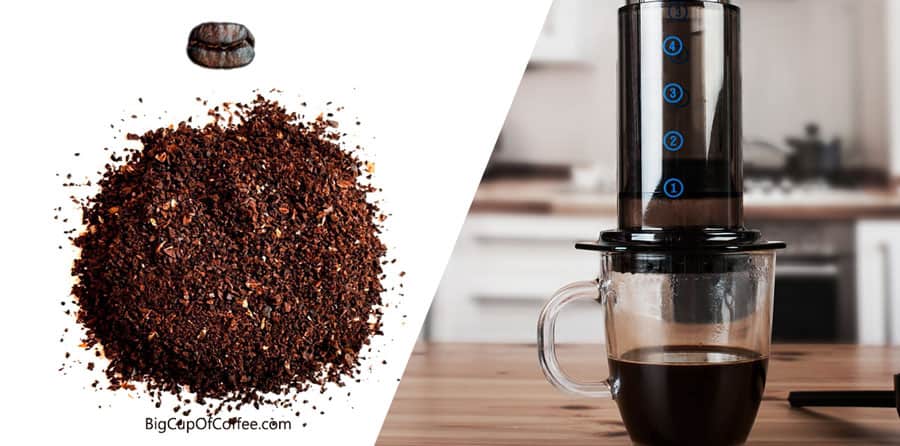
My second favorite Aeropress recipe is this faux espresso one. I use a fine espresso grind, but not as fine as you would use in a real espresso machine. Obviously, the pressure is not the same as an espresso machine, but it still works well.

And still, there are more options to try.
One of the best things about the Aeropress is that you can try countless brewing recipes, each calling for:
- Various grams of coffee,
- Grind sizes
- Different bloom and steep times,
- Stirring times,
- Plunging speed,
- Water temperature
- Some even require a pre-heated brew chamber to keep the water temperature from dropping sharply initially.
- Oh, and did I mention that switching between paper and metal filters will also make a difference?
The only thing that doesn’t make a difference is whether you are using the standard or inverted method.
After you try a few basic recipes, you’ll also want to start experimenting.
There are 2 rules in general:
- If you like a more robust cuppa coffee, you’ll fare better with a grind size on the finer side. This is because a finer grind size provides a larger surface area for the hot water to extract, resulting in a stronger cup of joe. You don’t want to go extra fine, though, since you will have trouble pushing the plunger down.
- If you like your coffee to be more delicate and mild, you’ll want to go with a coarser grind so that there is less surface area for the hot water to interact with. Anything from medium to medium-coarse.
Extra-fine grind
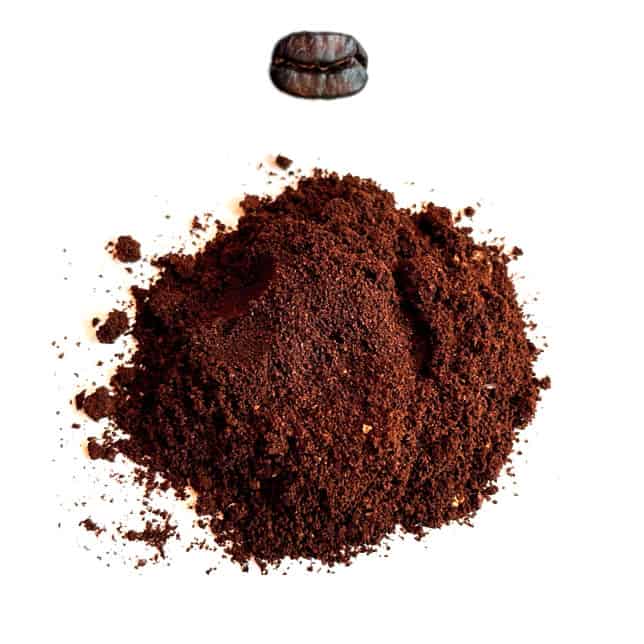
Extra-coarse grind

Why Is Coffee Bean Grind Size Important?
Ah, the age-old question, “Why is grind size important when it comes to brewing great coffee on the Aeropress (and any other brewing device)?” Let me explain.
You see, grinding your beans releases all of their flavorful oils, sediments, and aromas:
- If they’re too coarsely ground, these flavors won’t be adequately extracted – resulting in a weak cup o’ joe.
- On the flip side, if they’re overground, those same delicious compounds can become bitter or harsh tasting due to excessive exposure!
It’s like Goldilocks; not too fine but not too coarse – just right for that perfect balance of flavor extraction and complexity. And remember water temperature, too, as this plays an equally significant role in ensuring your brew tastes smooth on every sip.
But with that said, you should know that different grind sizes work better with different coffee-making devices. For example, an espresso will require more finely ground beans than an Aeropress or a French Press which requires a coarse grind for the long steep times.
When it comes to making great coffee, there really is no one size fits all answer – but adjusting your grind settings and using the right equipment can make sure you get maximum flavor from your beans.
Blade vs. Burr Coffee Grinders for AeroPress
Blade and burr grinders are the two main types of grinders used to grind roasted coffee beans.
- A blade grinder uses a sharp blade to chop the coffee beans into smaller pieces. This type of grinder is typically less expensive and easier to use, but it is less consistent in the size of the grounds it produces. You will have fine grind, medium grind, and even coarse grind sediments all in one, which does not make proper extraction possible.
- A burr grinder, on the other hand, uses two rotating abrasive surfaces (burrs) to grind the beans into a more uniform size. This type of grinder is typically more expensive, but it produces more consistent grounds and allows for more control over the fineness of the grind.
I recommend you use a manual burr grinder with your Aeropress, and stay away from blade grinders altogether. You don’t need an electric grinder for an Aeropress.
Don’t forget that you’d also want precision on the amount of coffee you are using. Check out my guide on using the AeroPress scoop.
Should You Use Pre-ground Coffee With AeroPress?
Using pre-ground coffee in an AeroPress is not a problem. You will likely get a cup of strong coffee since grocery store pre-ground coffee is typically a fine espresso grind.
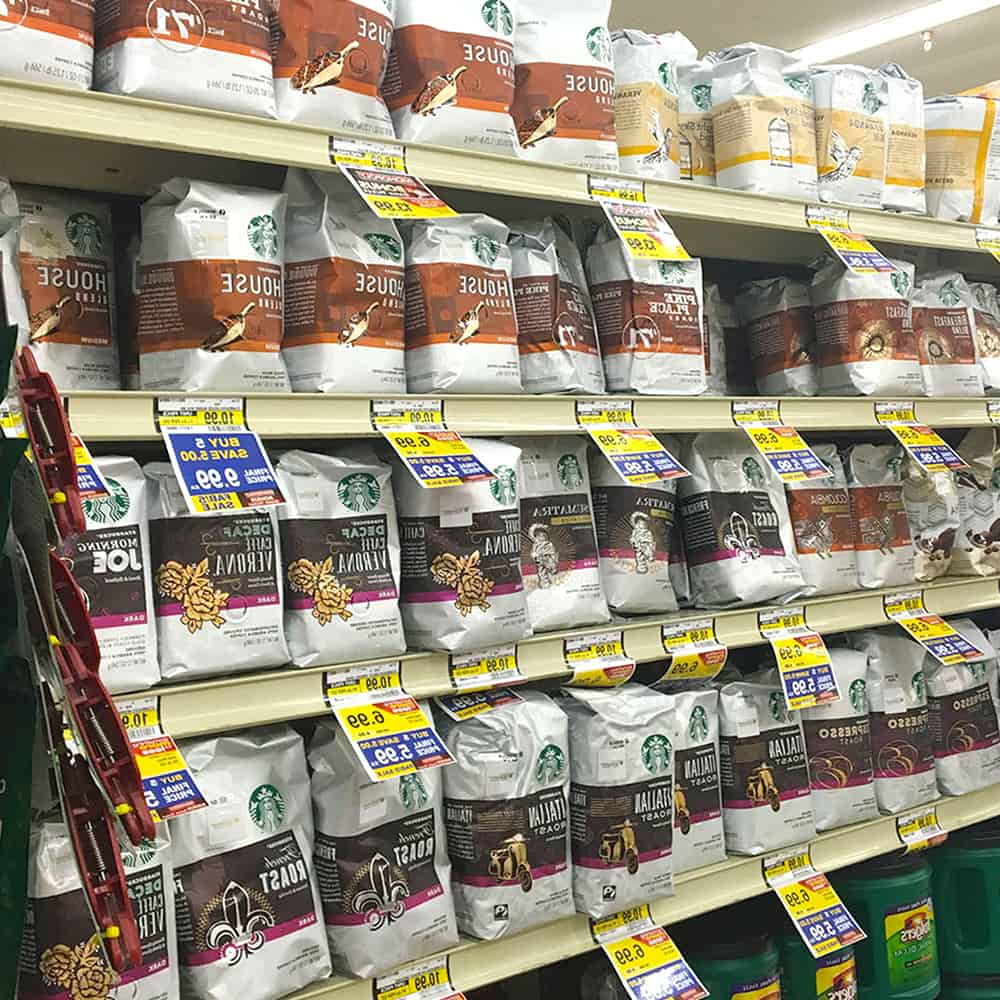
However, grinding the coffee yourself will allow you to dial in the right coffee grind size for your brewing method and desired taste.
Besides, you should be aware that pre-ground coffee has a much shorter shelf life than whole beans and will lose its flavor more quickly, even if you store it properly.
Check out our guide to the best coffee beans for the AeroPress to help you with your shopping.

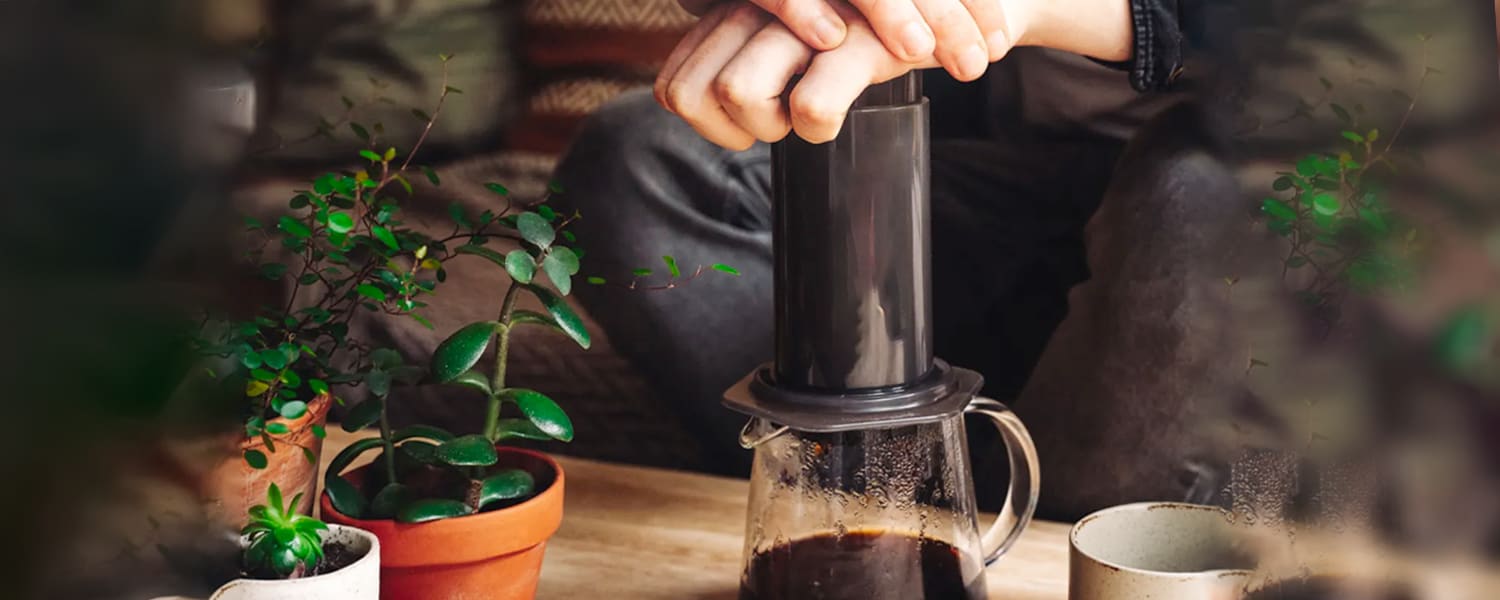
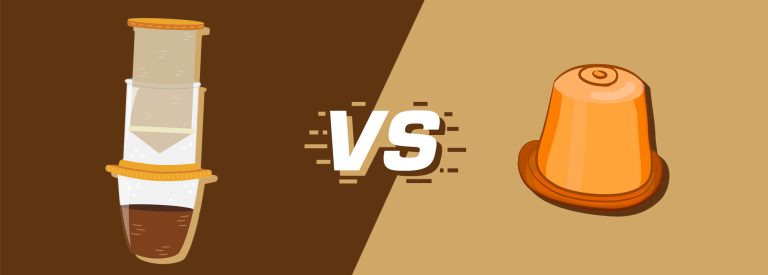
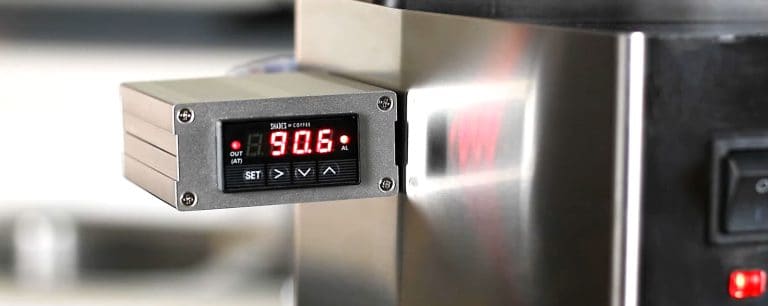
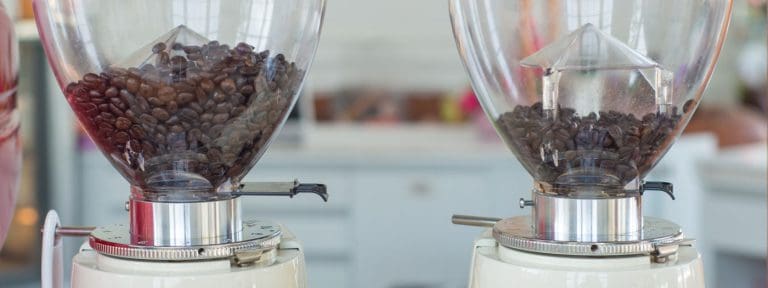
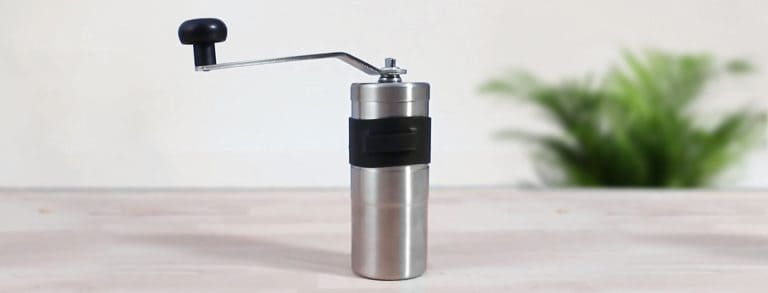
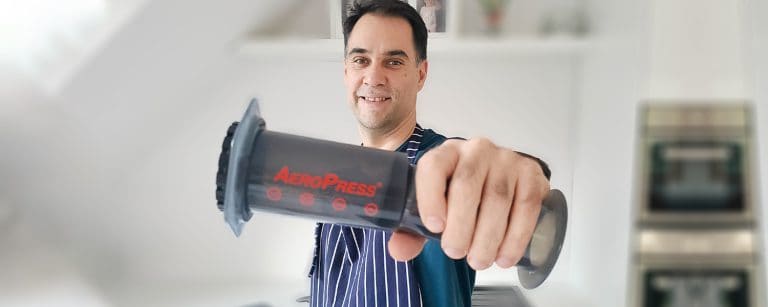
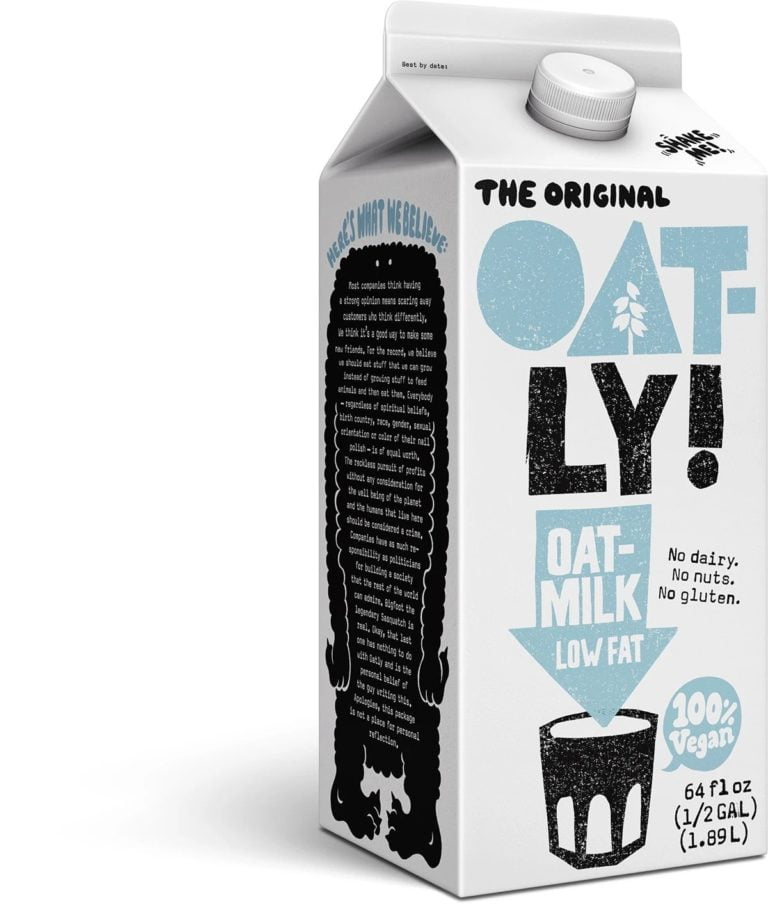
Pre-ground coffee can actually work in a pinch, especially if you can’t afford a fancy grinder. Sure, freshly ground is ideal, but let’s not gatekeep AeroPress brewing too much. I’m all for inclusion in the coffee community.
I can’t stress enough the importance of avoiding pre-ground coffee for AeroPress, as mentioned in the article. Freshly ground beans provide superior flavor. Also, I believe the freshness of the grind is just as critical as the grind size.
I totally agree Benjamin.
I’m curious about the blade vs. burr grinder debate for AeroPress. Is the difference genuinely noticeable in the coffee’s taste, or is it more about consistency in grind size?
Definitely. Blade grinders produce grinds of various particle size, they are not uniform. This is the reason they are not even comparable to a burr grinder.
Thanks to your article, I’ve finally nailed the grind size for my Aeropress. It’s amazing how a medium-fine grind can transform the cup. Serendipitously, it also works wonderfully with my pour-over setup.
Tom, this Aeropress guide is a godsend. I’ve been battling with inconsistent coffee from my Aeropress and couldn’t pinpoint the problem. After your explanation of how grind size affects the brew, I adjusted mine and immediately noticed a difference. Your tips on grind sizes were just what my morning routine needed.
Tom, your breakdown on why grind size matters made so much sense. The science of surface area and extraction really clicked for me. Now I get why I’ve been disappointed with some of my past brews. Time to experiment with my grinder settings.
I’ve read about the inverted method but was unsure how it might change the grind size requirements. Your article implies the grind size has no impact on the method chosen. Can anyone elaborate on why that is?
I’ve found that using a metal filter as opposed to a paper one, combined with a coarser grind, achieves an entirely different flavor profile. Has anyone else experimented with this and noticed the nuanced differences?